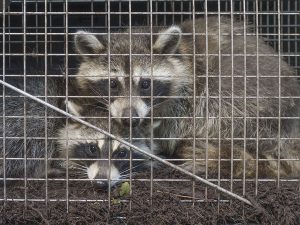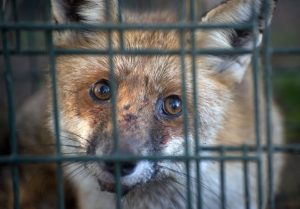Safety
Safety is the number one reason why a person should never attempt animal removal work on their own. There are several tools and supplies needed for certain wildlife control projects that are unfamiliar to anyone outside of the industry. These tools can seriously injure a person, and even jeopardize the structural integrity of a home, if used improperly. The animals can also be dangerous, mostly because they are unpredictable. Wildlife are susceptible to diseases that are dangerous and contagious to humans and pets. These infectious diseases can be contracted through saliva, feces, blood, and more. When a person is unfamiliar with handling wildlife, and unfamiliar with particular species behavior, they can put themselves in grave danger.
Not only can wildlife pass along infectious diseases, the repercussions of their presence can make humans and pets sick as well. For example, roosting bats leave behind abundant amounts of guano, which can grow fungus. This fungus releases spores into the air that can be breathed in by humans and pets. It is a respiratory illness called Histoplasmosis that causes difficulty breathing and fungus growth in the blood stream. If a person does not have the proper equipment, and is not trained on proper
methods, they cannot properly eliminate
hazards left behind by wildlife.
The Law
Not only is ‘DIY’ wildlife removal and control unsafe, it is mostly illegal. Most states do not allow people to trap, harm, catch, or kill wildlife without proper permits and licenses. Professional wildlife rescue and control companies retain the proper tools, training, experience, and licensing to provide humane wild animal extraction, exclusion, prevention, and control. Humane methods of wildlife removal are important, and professionals are trained on how to do it properly. They also have the proper resources to relocate and rehabilitate wildlife in faraway, safe habitats.
Don’t sacrifice your personal health and the health of those around you. Leave wildlife removal to the experts at all costs. It is a decision you will never regret!
Indianapolis Wildlife Removal
Call 317-257-2290 for professional DNR licensed wildlife removal and control in Indianapolis, Indiana. We have decades of experience in the wildlife control industry, handling raccoons, bats, skunks, opossum, squirrels, and more. We provide safe and humane wildlife removal services for residential and commercial properties, all at the most competitive prices in town. Call 317-257-2290 to get affordable and professional wild animal removal services in Indianapolis, IN today.



